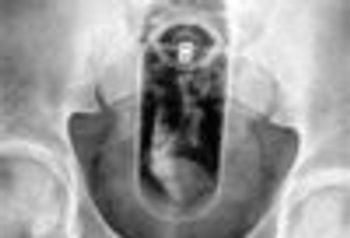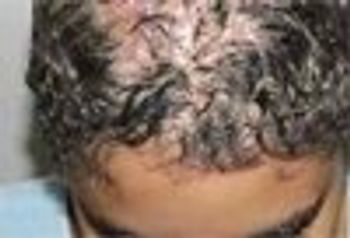
training test

Just 4 years after the licensing of the quadrivalent human papillomavirus (HPV) vaccine, researchers found a substantial decrease in vaccine-type HPV prevalence and evidence of herd immunity among at-risk minority, low-income young women. This discovery could lead to a reduction in cervical intraepithelial neoplasia and, ultimately, cervical cancer in the community. More >>

Physical punishment such as spanking is associated with a range of mental and personality disorders in adulthood, researchers have found. The findings point to the importance of more positive parenting approaches that will ensure children’s future mental health. More >>

There may be a good medical reason for parents to get a dog or cat as a pet. It appears that children exposed to a dog or cat in their homes during the first year of life are healthier than those without a furry family member. More >>


Retinopathy of prematurity (ROP) is widely considered the primary cause of visual impairment in extremely premature children. Now Danish researchers report that cerebral damage may be the strongest risk factor. This finding could affect how children with cerebral damage are managed. More >>

Infants and toddlers with food allergies suffer a high rate of allergic reactions because of lack of vigilance on the part of caregivers, researchers report. What kinds of exposures caused the most problems? More >>

Type 2 Diabetes : Diagnostic, treatment challenges Dyslipidemia : New NHLBI guidelines Adolescent anxiety disorders : Effective therapy, medication options Dermcase : Newborn with persistent rash on foot Puzzler : Vomiting and failure to thrive in breastfeed infant In type 2 diabetes, the ability of insulin protein (left) to interact properly with glucose molecules (right) is compromised.

The anxious first-time parents of a 10-day-old girl bring the baby to your office for urgent evaluation of a rash on the bottom of her right foot that has persisted despite treatment with topical antibiotics and antifungals.

Investigators compared the efficacy of 3 treatment regimens in 699 youngsters aged from 10 to 17 years with type 2 diabetes: metformin monotherapy (1,000 mg twice daily), metformin plus rosiglitazone (4 mg twice daily), or metformin plus a lifestyle-intervention program focused on weight loss through family-based changes in eating and activitiy behaviors.

To describe the typical longitudinal developmental trajectories of social and communication functioning and repetitive behavior in children with autism, investigators analyzed data from birth records and a database of the California Department of Developmental Services that recorded symptom severity and functioning in nearly 7,000 children aged from 2 to 14 years with autism.

A new study shows that infant weight gain may be associated with the way the milk is consumed, not only with the type of milk.

The US FDA has approved a combination vaccine for preventing invasive diseases caused by Hib and Neisseria meningitis serogroups C and Y in children aged 6 weeks to 18 months.

A baby presented to you at 8 months has episodes of vomiting and has experienced rapid deceleration of weight velocity since 4 months.

Type 2 diabetes in children was unheard of a generation ago. Even though very rare event today, the obesity epidemic is placing kids at risk.

On May 30, 2012, New York City Mayor Michael Bloomberg caused an early summer commotion when he suggested that New York ban sodas and other sugary drinks in containers of more than 16 ounces sold in outlets other than grocery and convenience stores. Mayor Bloomberg was lampooned as acting more like a nanny than a mayor.

Elevated blood lipids in childhood are risk factors for cardiovascular disease in young adults. New guidelines for universal lipid screening and treatment of dyslipidemia in children will help clinicians to identify these patients and establish treatment goals that will reduce overall cardiovascular risk factors later in life.

Once you have identified that your adolescent patient has an anxiety disorder, it's time to assess the depth of the problem to discover the best treatment.

Children with autism spectrum disorder need greater access to the coordinated care available through a medical home, according to a systematic review of 13 studies that examined health care use, health care expenditures, and access to services by children with ASD.

Significant numbers of infants who survive meningitis caused by group B Streptococcus (GBS) suffer long-term adverse outcomes such as developmental delay, academic underachievement, neurologic impairment, blindness, hearing loss, and cerebral palsy, a new study reports. More >>

Exposure to antimicrobial agents commonly used in personal-care products may increase children’s risk of food and environmental allergies, a study of a large, nationally representative sample suggests. More >>

Teenagers may have a new and legitimate reason to sleep longer. New research shows that lack of weekday sleep during adolescence may be an important predictor of cardiovascular disease (CVD) in adulthood. More >>

Researchers from the US Food and Drug Administration reported that for US children aged 17 years and younger, outpatient prescriptions for birth control medications soared 93% and for attention-deficit/hyperactivity disorder 46% since 2002, although overall prescription drug use declined. What is behind these trends? More >>

Diaper Dermatitis is the most common skin problem in infants. The differential includes contact and seborrheic dermatitis, psoriasis, scabies, and infection. Treatment guidelines are outlined here.

Congenital hemangiomas that grow rapidly or that threaten a vital organ may now be treated with oral propranol or topical timolol. Details here.

This is a case of non-abuse: the foreign body was an attempt at self-stimulation.

When it comes to tinea capitis, there’s a downside to loving your pet. Dermatologist Ted Rosen takes you through the differential and details effective diagnostic strategies.

Head lice: Dr. Ted Rosen eschews nit picking and updates you on currently effective therapies.

Serum uric acid level may be a predictor of metabolic syndrome in adolescents, a new study reports. The findings offer clinicians another diagnostic tool for identifying children who are at a higher risk for developing cardiovascular disease and type 2 diabetes mellitus.

Children aged as young as 7 years report that they have engaged in nonsuicidal self-injury, hurting themselves without the intent to die. Who is most at risk?